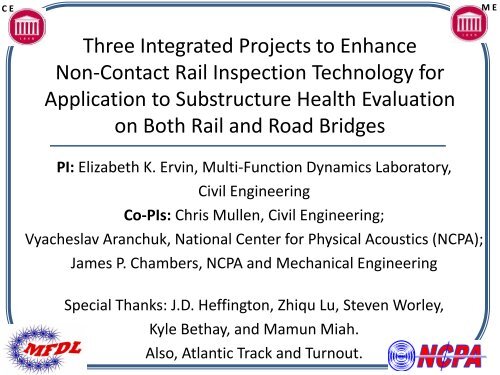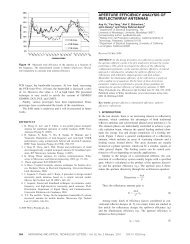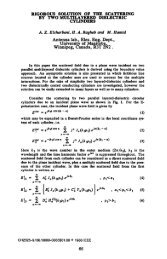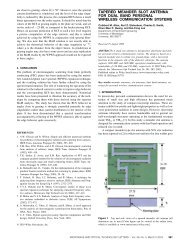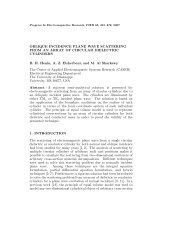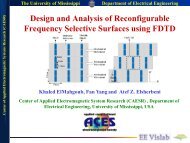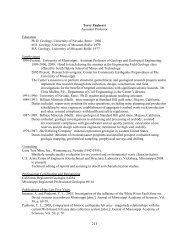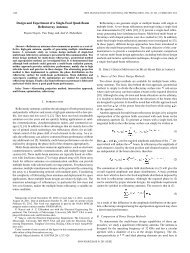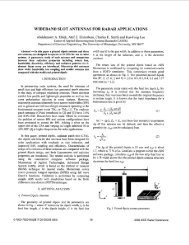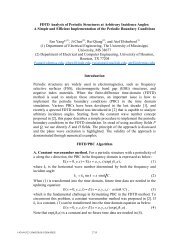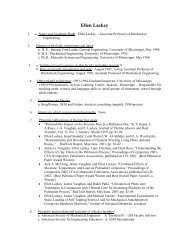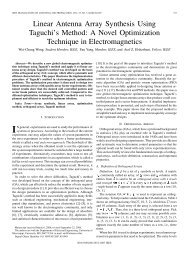Project Data Sheet
Project Data Sheet
Project Data Sheet
- No tags were found...
You also want an ePaper? Increase the reach of your titles
YUMPU automatically turns print PDFs into web optimized ePapers that Google loves.
C EM EThree Integrated <strong>Project</strong>s to EnhanceNon-Contact Rail Inspection Technology forApplication to Substructure Health Evaluationon Both Rail and Road BridgesPI: Elizabeth K. Ervin, Multi-Function Dynamics Laboratory,Civil EngineeringCo-PIs: Chris Mullen, Civil Engineering;Vyacheslav Aranchuk, National Center for Physical Acoustics (NCPA);James P. Chambers, NCPA and Mechanical EngineeringSpecial Thanks: J.D. Heffington, Zhiqu Lu, Steven Worley,Kyle Bethay, and Mamun Miah.Also, Atlantic Track and Turnout.
This project extends rail technology to generatean inspection methodology for bridgesubstructure evaluation.Technical gap: the identification of sensitive globaldynamic property changes resulting from localsubstructural component damage.
C EM EOutline: Integrated Activities• Experiment 1: Non-Contact Rail Inspection• Experiment 2: Bridge Scale Model• Experiment 3: Full Scale Bridge Test• Structural Health Monitoring (SHM) AlgorithmDevelopment (throughout project)• Finite Element (FE) Modeling (throughout project)Gantt Chart available upon request
Experiment 1: Full Scale Rail• Build Fall 2012 (completed)• Test Spring 2013 (in progress)Standard railway: typical transport rail usingcommon tie-downs– Rail: 115 pound/yard A.R.E.A., a medium heavy rail– Ground Prep: trench; loose limestone, compaction,repeat– Set ties: target central tie has artificial settlementplates– Set rail and e-clips
Experiment 2: Scale Model Bridge• Design Fall 2012 (completed)• Build Spring 2013 (in progress)• Test/Analyze Summer to Fall 20133 to 4feet6” thick with rebarTarget SlabVariable bearings tosimulate damage.SupportBox~13 feetSupportBoxC E1:12 scale of overall Eastgate Bridge dimensions
Experiment 3: Full Scale Bridge• Plan Fall 2012 to Spring 2013 (in progress)• Test Summer 2013• Analyze Fall 2013University Avenue Bridge: Eastgate Bridge (near Ford Center)C E
Structural Health Monitoring (SHM) Algorithm“A Comparisonof StructuralHealthIndicators,”RAM Workshop;2 nd placepresentation.Selfwrittencode;testing onstudentASCEbridge
FE Model of 1:12 Scale Bridge TestTargetCenter SlabDeck Slab Torsion Mode(29.2 Hz)Support Bending Mode(42.0 Hz)Deck Slab Bending Mode(109 Hz)C EANSYS: Baseline for Eastgate Bridge
C EPotential <strong>Project</strong> BenefitsUnique selling points of our health program include…– comprehensive analysis for any data/structure,– comparison of a variety of algorithms, and– basis for multivariate analysis.The new integrated inspection technique is expected to be…– more efficient,– more cost effective, and– more accurate than traditional (visual) techniques.Potential Product: Improved Inspection Technique• Remaining life estimation could potentially prevent collapse but, ata minimum, will aid decision-making on the bridge’s maintenance.• This project keeps in mind how best to transfer any new techniqueto field inspectors and/or maintenance workers.M E


